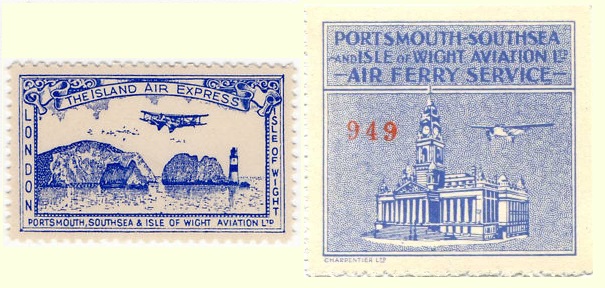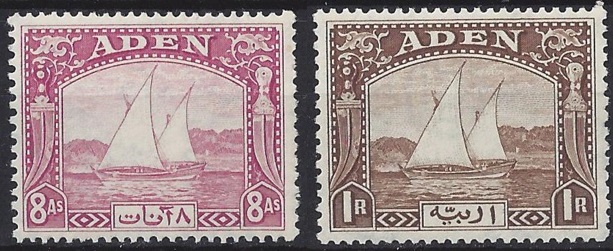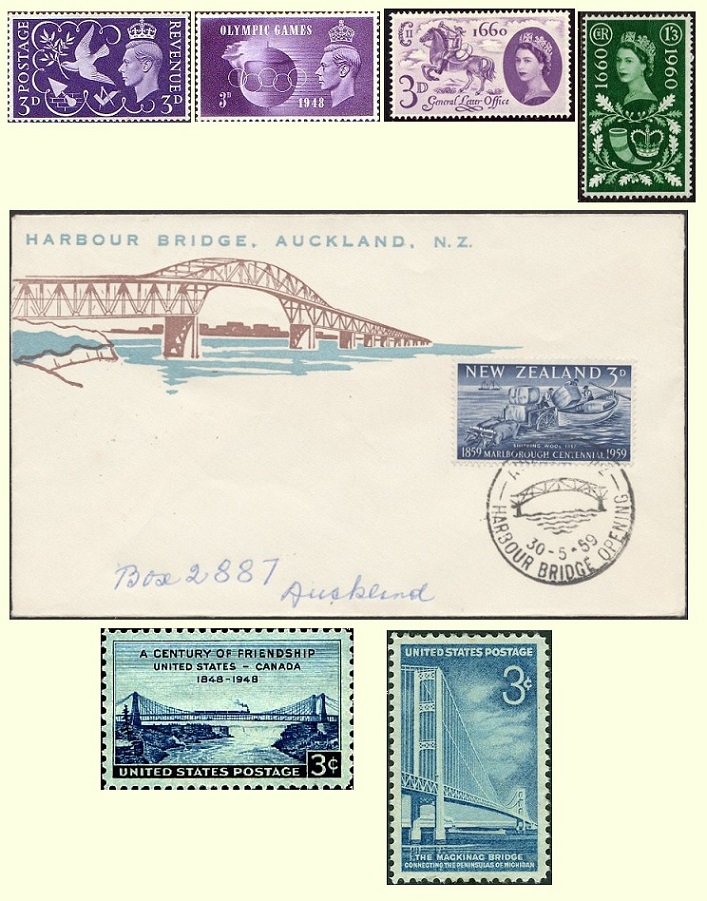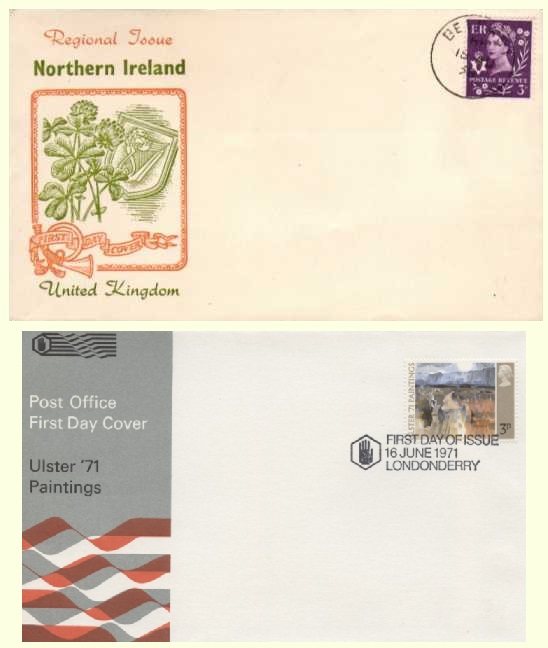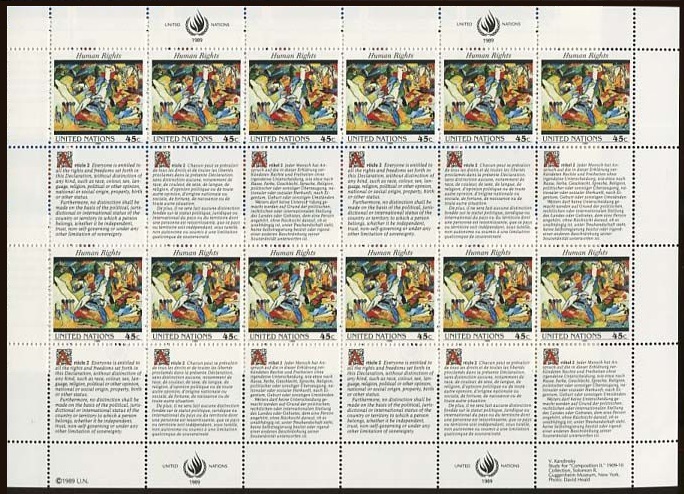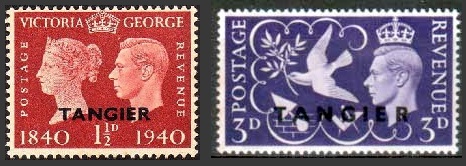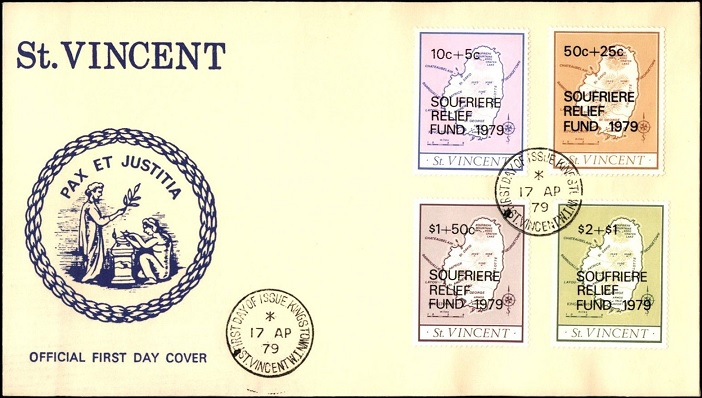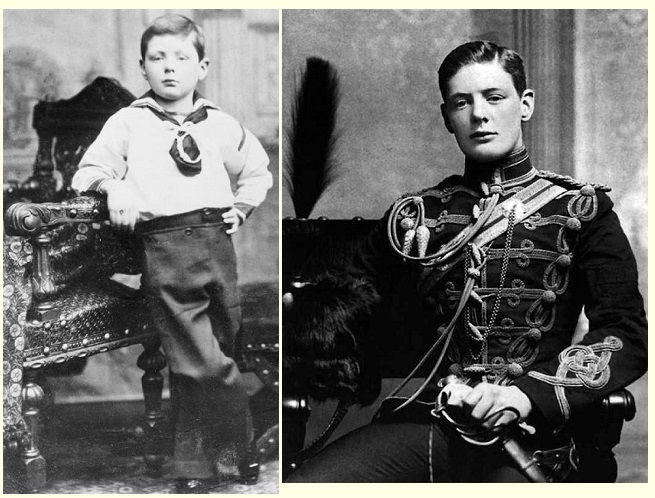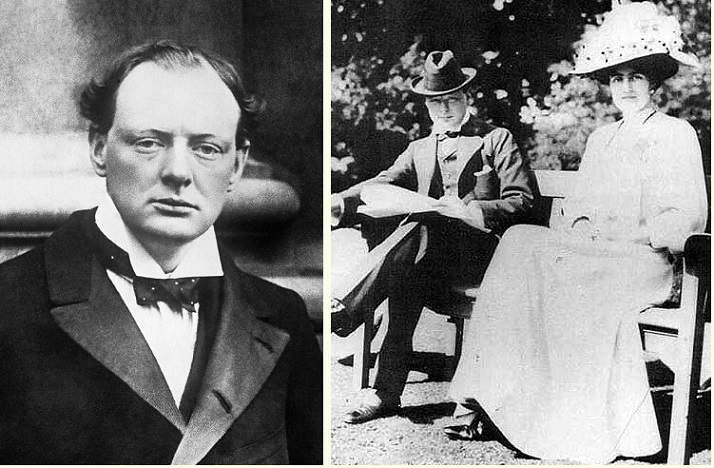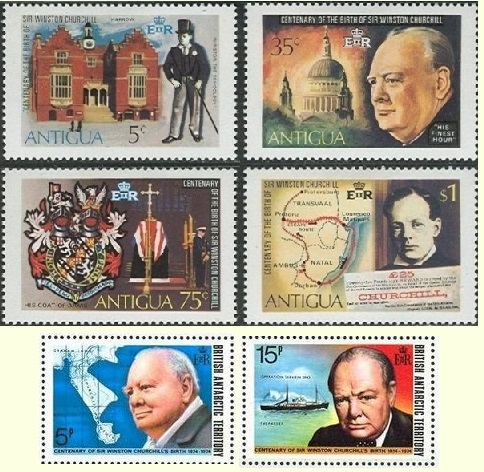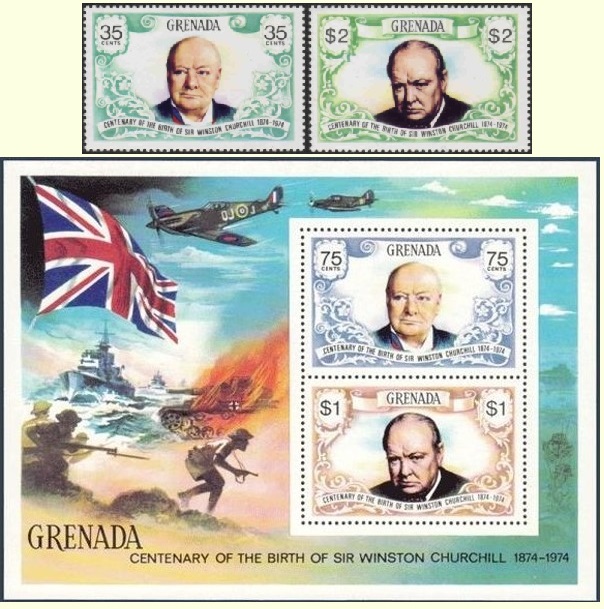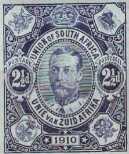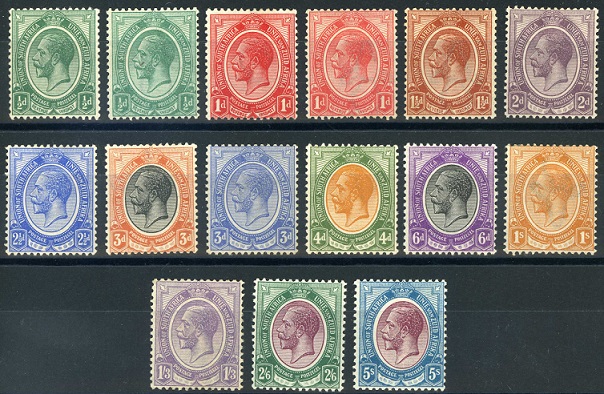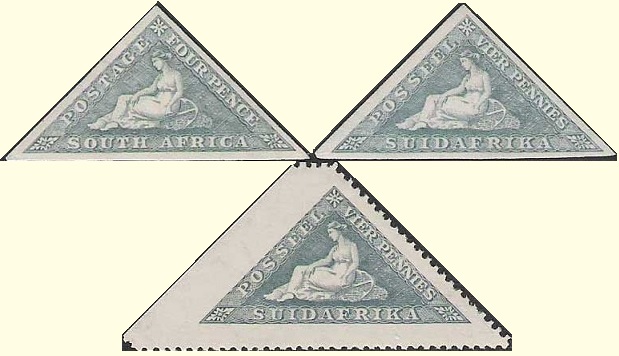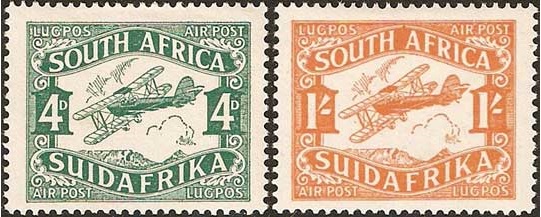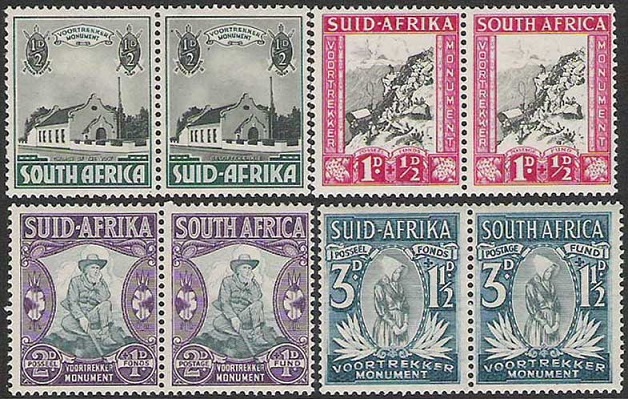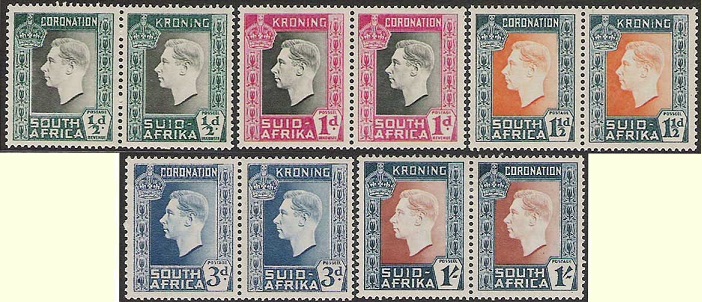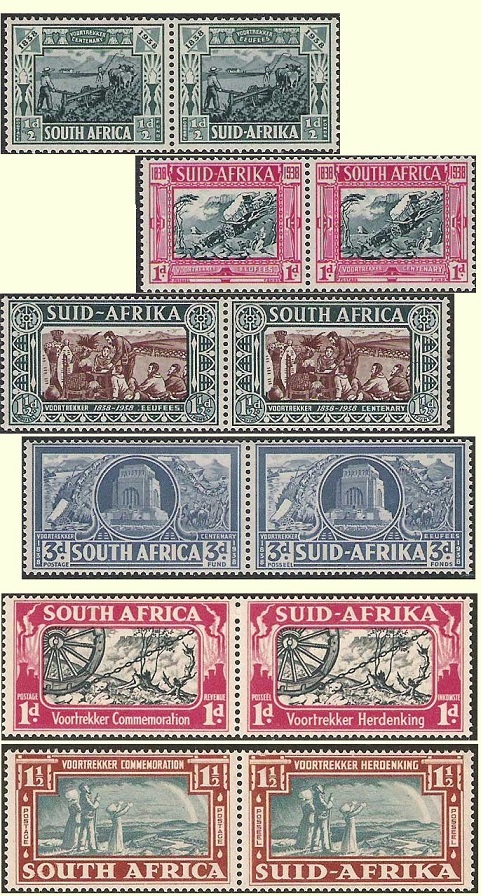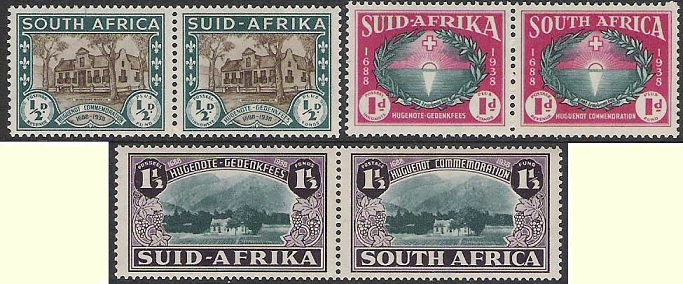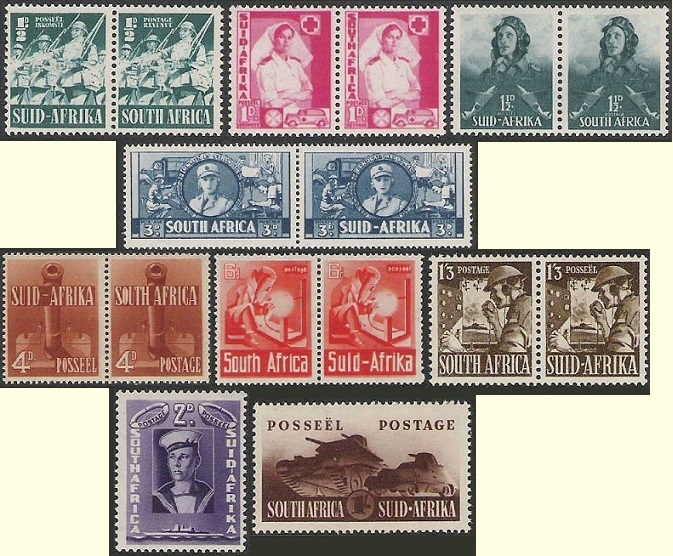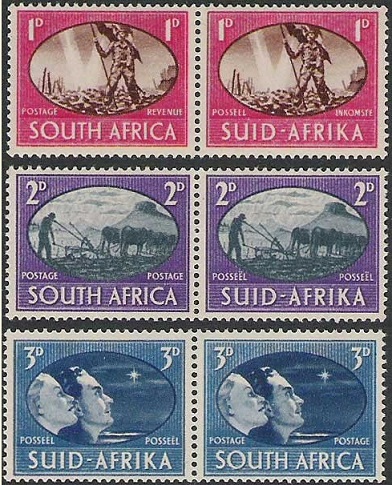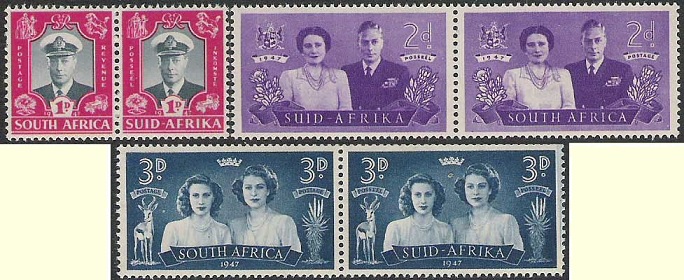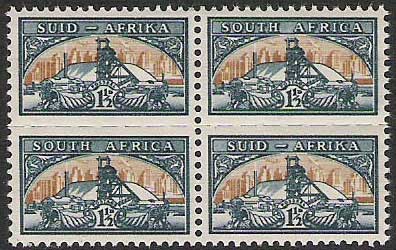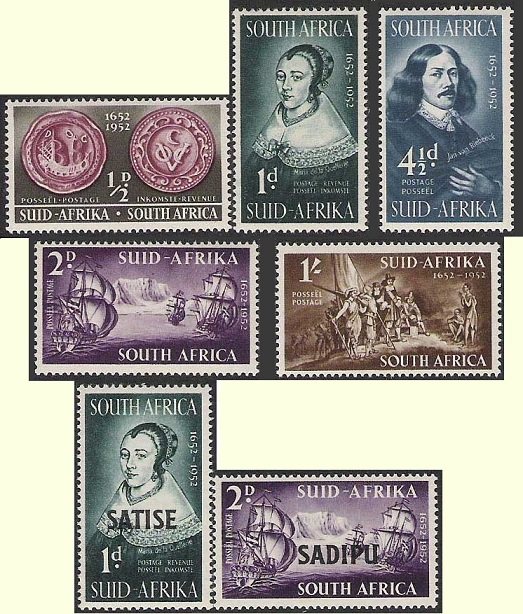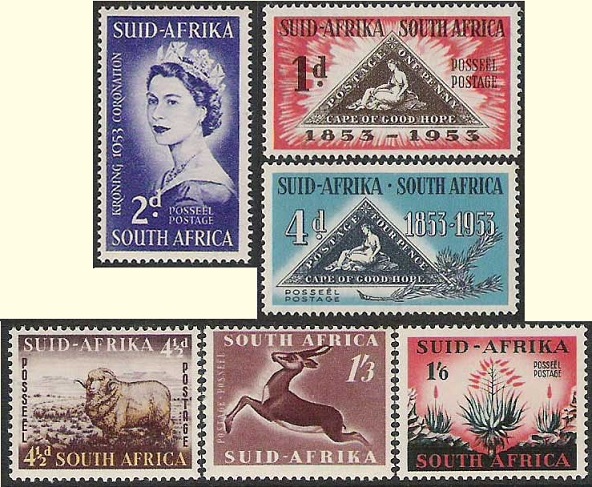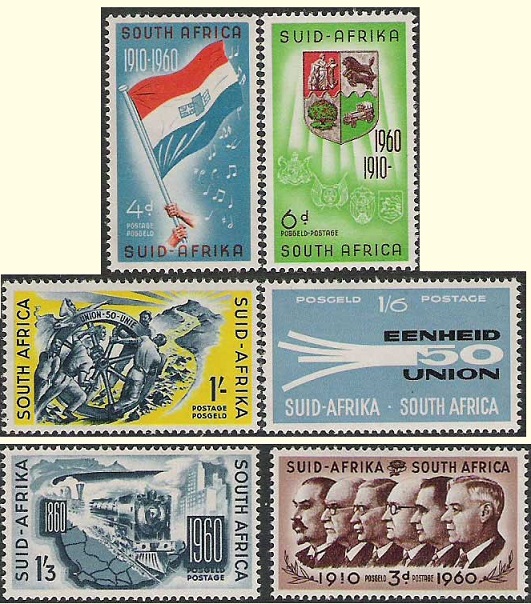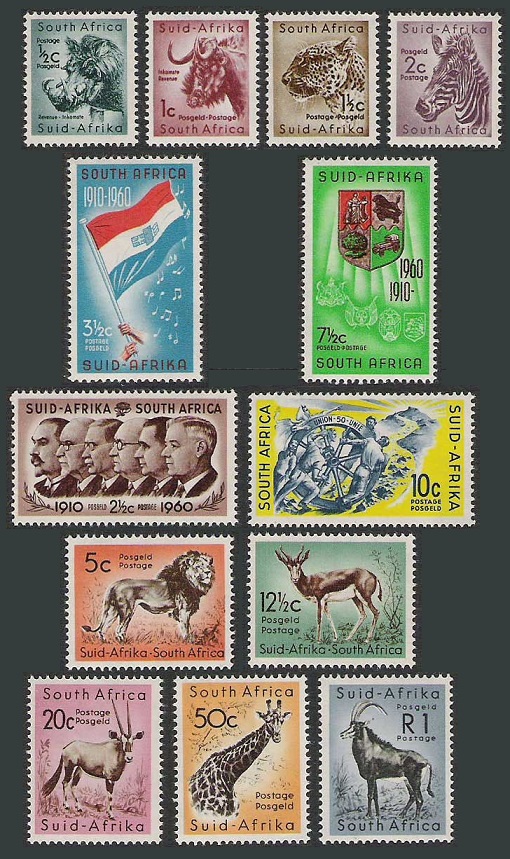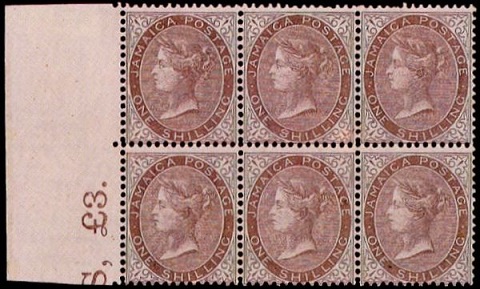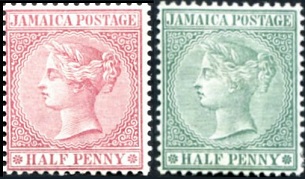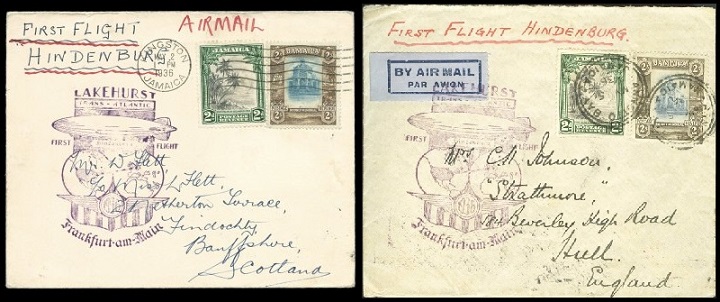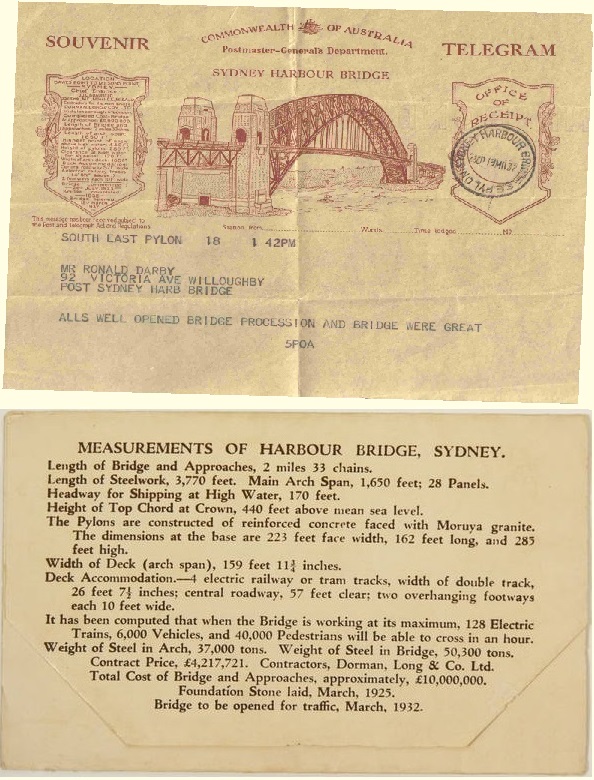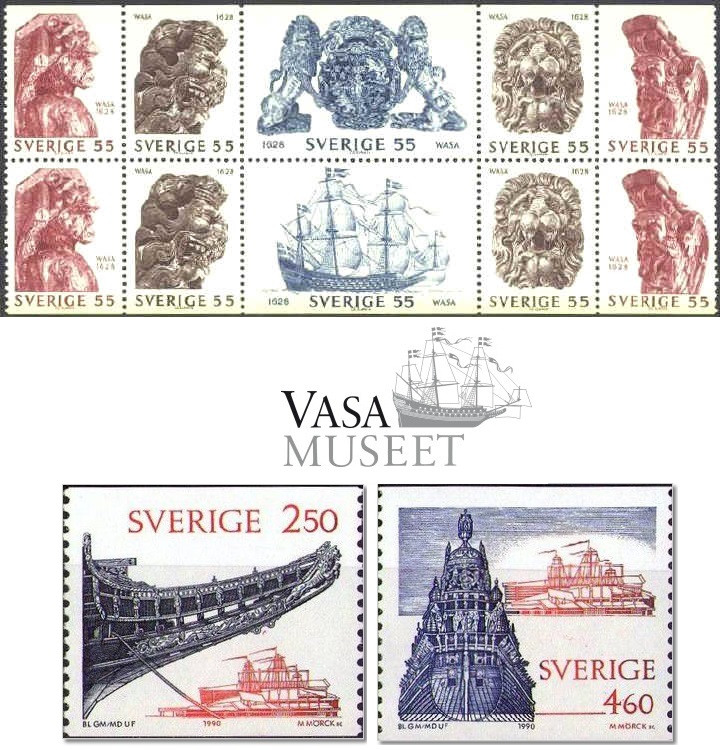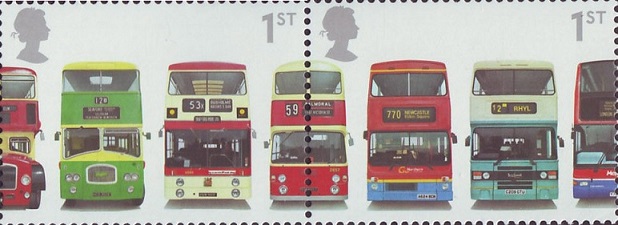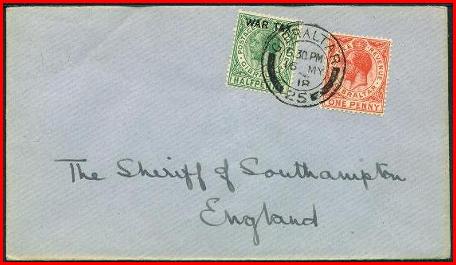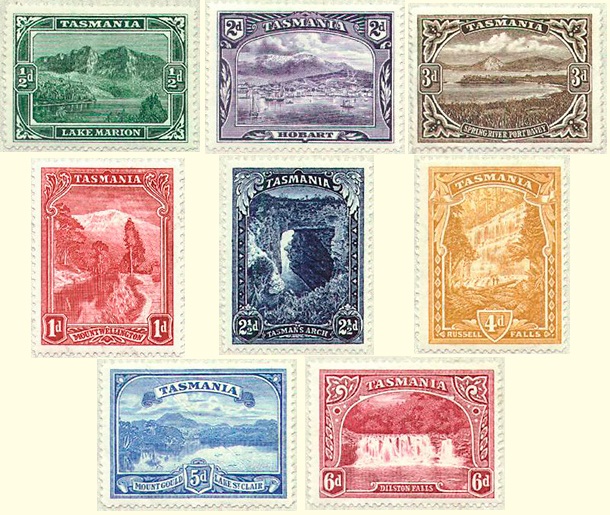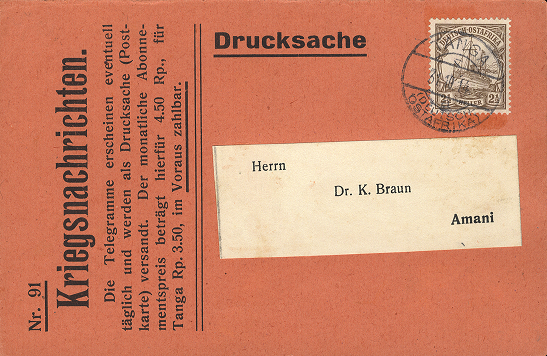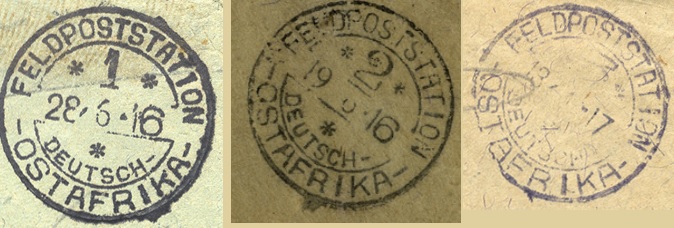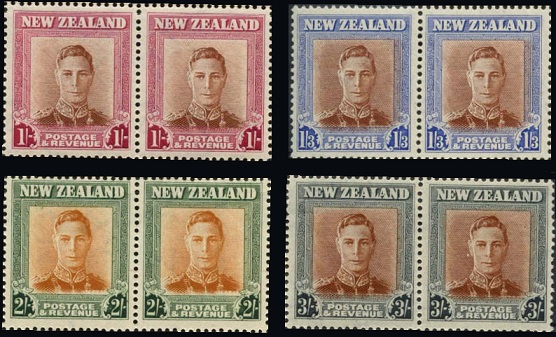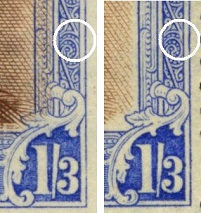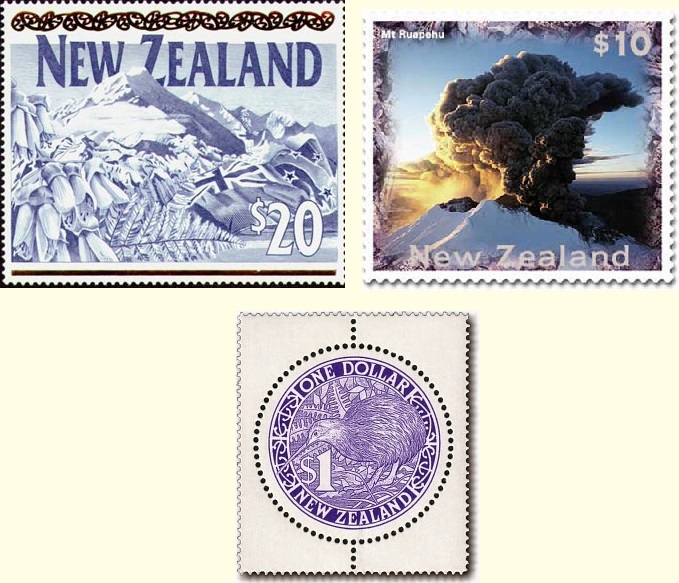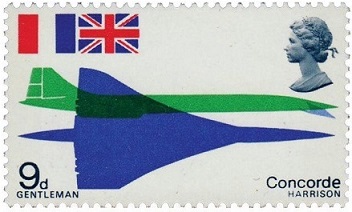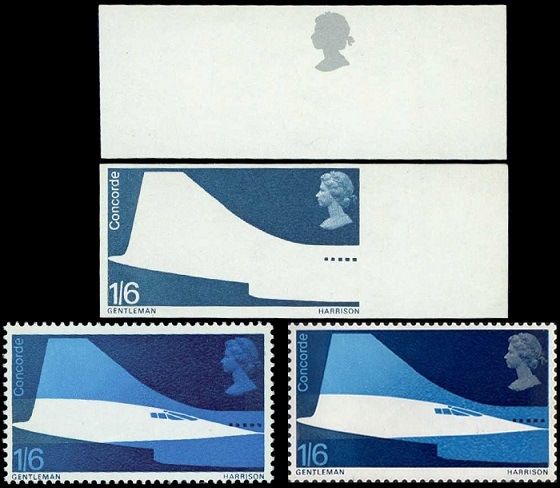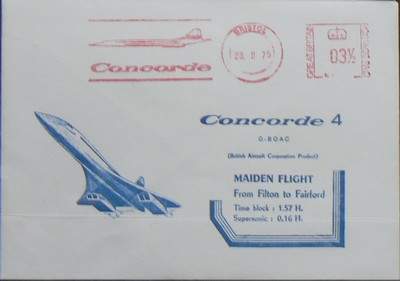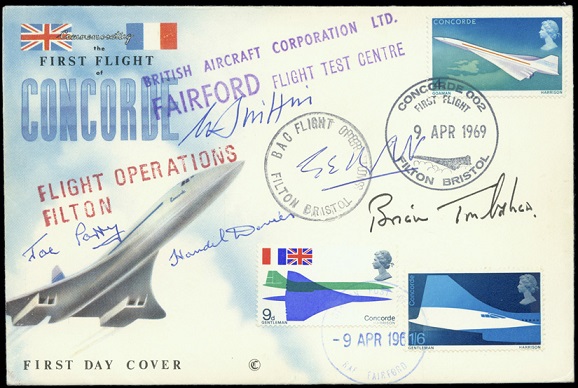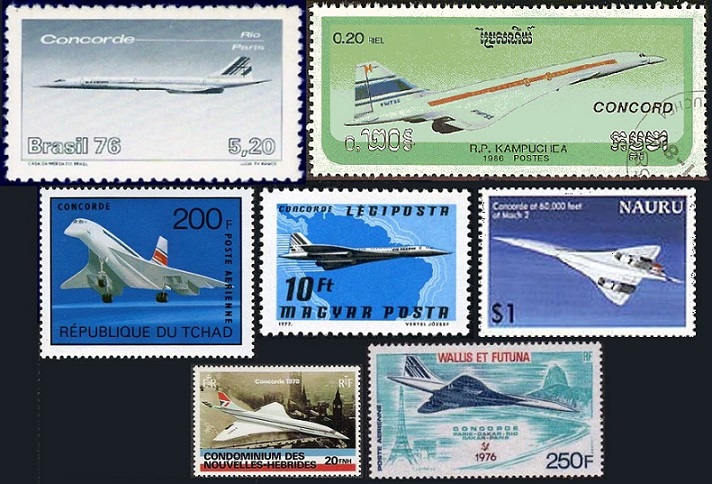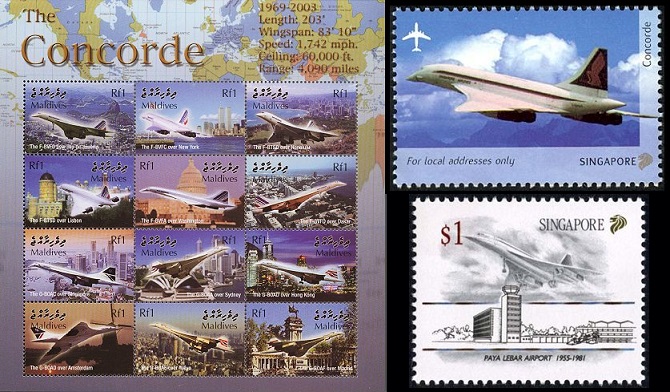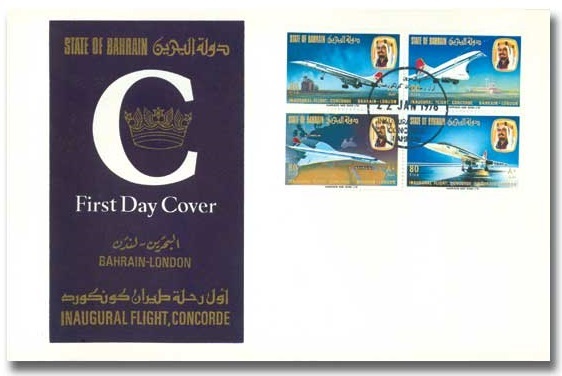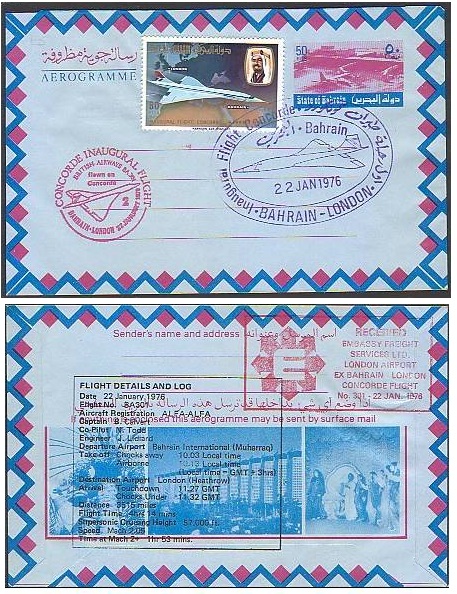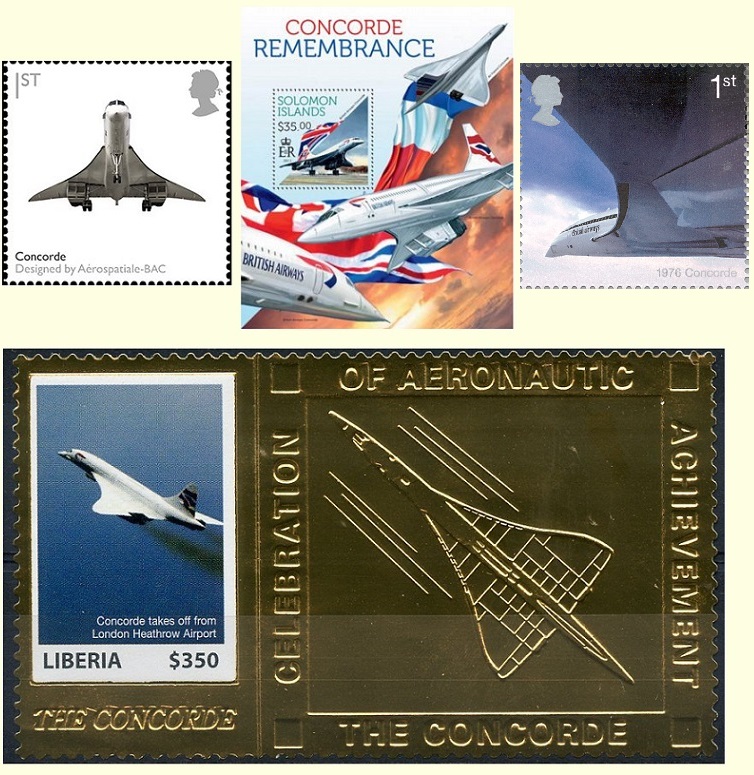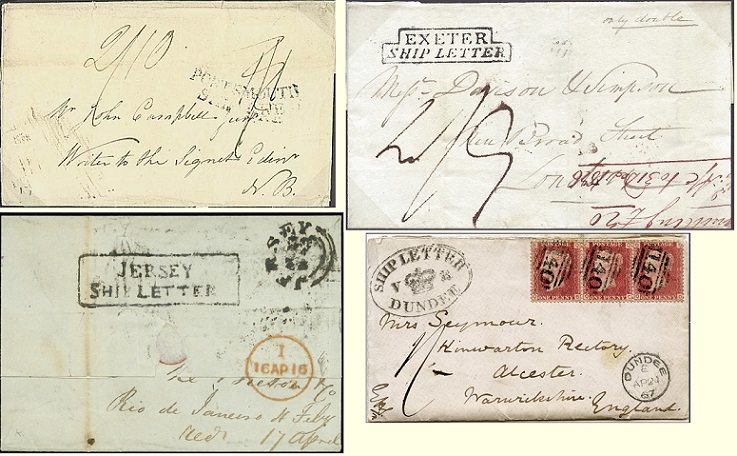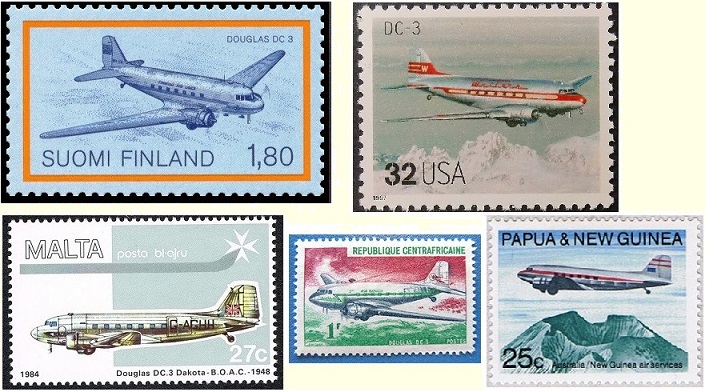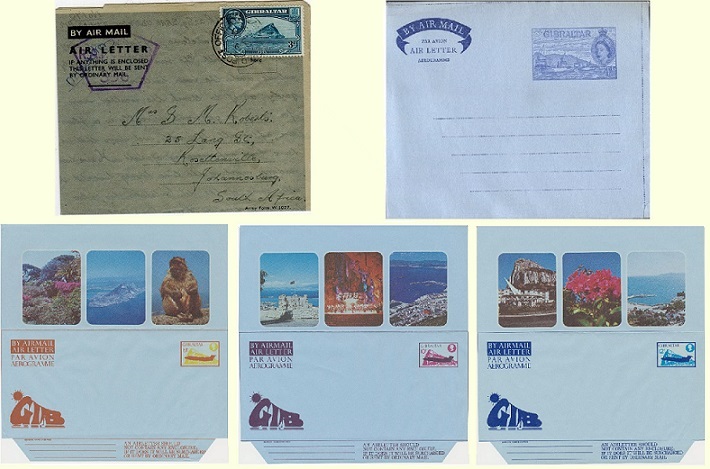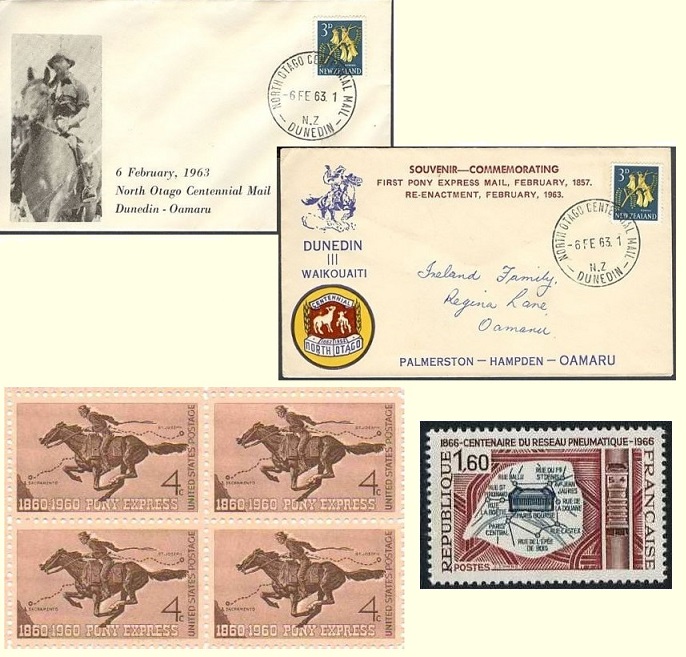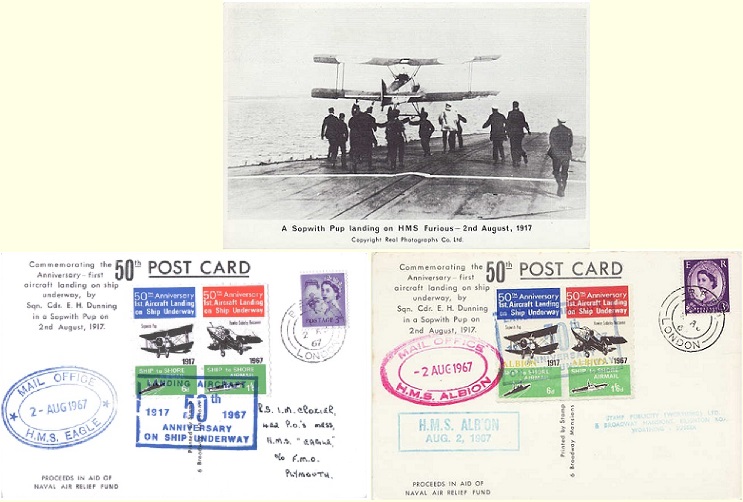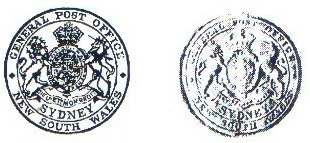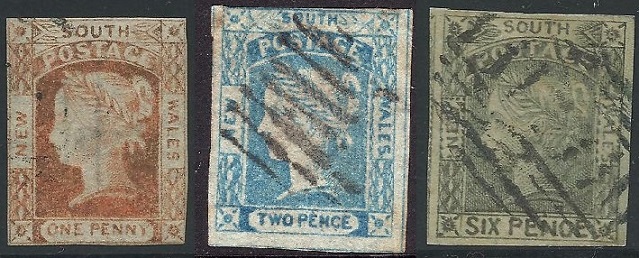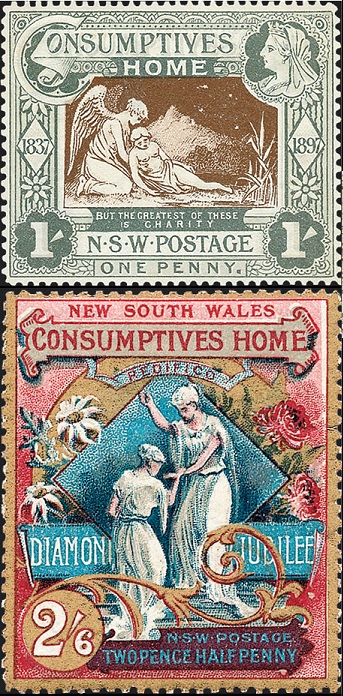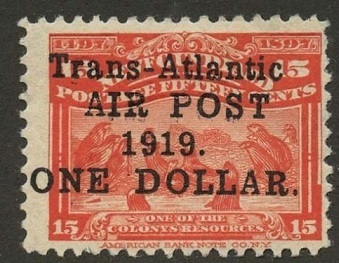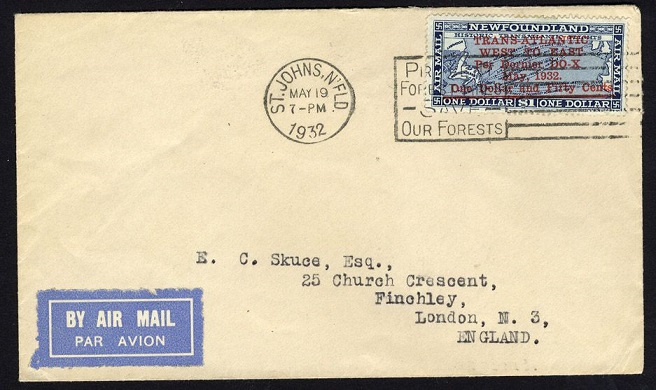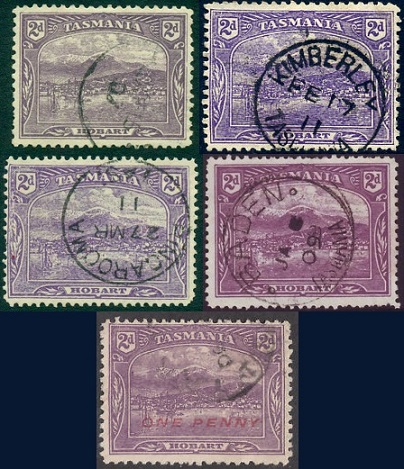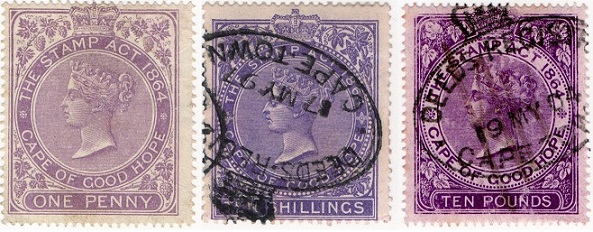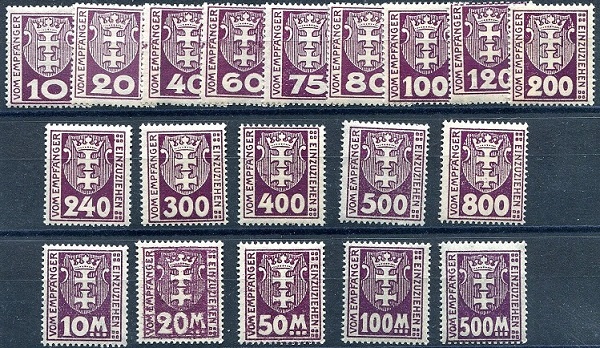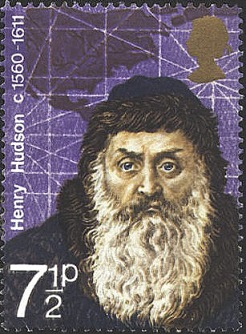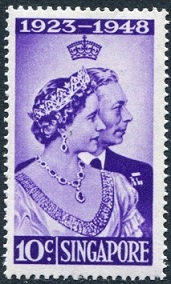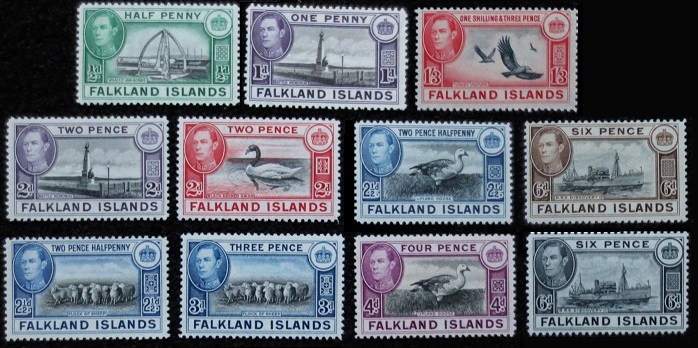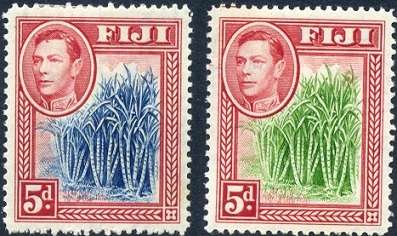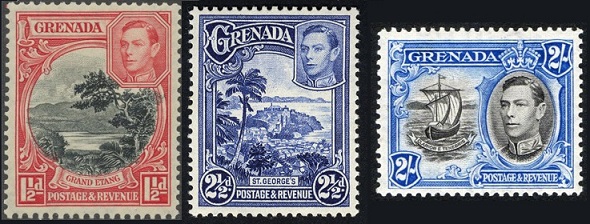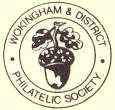
News Archive: 2015 |
|
10th November 2015 - Interesting Stamps, Covers or Cards
In a very varied evening, there were fourteen displays from members.
Dennis Proctor showed an assembly of se-tenant and tête-bêche stamps from German Booklets and coils. He included some combinations taken from sheets that do not occur in booklets.
After the break, Ivan Dickason showed some more of his ½d collection: Kathiri State of Seiyun (actually ½ anna), King George V 1922 Ascension overprint on ½d St. Helena; a block of Bahamas 1965 International Co-operation Year issue; a Gibraltar coil join; Jamaica 1938/51 (various colours/printings); New Zealand Health triangulars in sheet; New Zealand Peace issue; Norfolk Island Ball Bay on white paper and finally Transvaal.
Derek Steele showed pilot-signed covers from Canada, collected for the pilots, rather than the flights. He noted that the high standard of training of these pilots resulted in very few being lost on War Service.
Having started, Patrick Reid also finished, showing a nine sheet display on Australian Rule 10, which governs the use of window envelopes. It featured a range of handstamps for contravention of the rule. 27th October 2015 - The Number 3
There were a number of inventive interpretations of the topic for the meeting, "The Number Three".
Michael Curling showed a 1908 3d wrapper, a Queen Victoria 3d Parcel label, 3 x ½d on a cover to Malta, a receipt for telephone service with 3 x 3d on, a 1911 Registered letter, an Airmail cover bearing 5 x 3d stamps, a Registered cover bearing 3 x 1½d stamps, an advice of delivery with a 3d stamp on the receipt, and 3 x Indian stamps on a Coronation Durbar cover.
Chris Wootton brought along three sheets of Australian higher values.
Roger Sammons displayed the UN Human Rights stamps in sets of three for New York (in English), Geneva (in French), and Vienna (in German), issued in sheetlets of 12.
Ivan Dickason began with a range of commonwealth 3d stamps in blocks (or 3 x ½d stamps) from Australia, the Bahamas, Basutoland, Fiji, Malta, Cayman Islands (a block of four 1½d and sheetlets of three), St Vincent 1½d and 2d, a pair of the South Africa Voortrekker 1½d and the miniature 1½d goldmine stamp in a unit of four. These were followed by Virgin Islands 3d, 1935 Silver Jubilee 1½d, the 1940 Centenary 1½d overprinted "Tangier" and a similar overprint on the 1946 Victory 3d value.
Trevor Cornford brought the first half to a close, showing a letter from Wellington (at the Savoy Hotel in Egypt), St Vincent Soufriere Relief $2+$1 on cover, a 1923 postcard from Victoria Falls, a 1930 letter from Bulawayo, an 1893 order for material, a South Georgia 1970 3d rate cover and a South Georgia 1993 whaling cover, Christmas Island covers used in March, a British Antarctic Territory cover with a 3 in the datestamp and a 1906 Ridgways Tea blotter.
Dennis Proctor opened the second half with German 1933 Third Reich issues, followed by stamps from the occupied Western zone (3 divisions) and the Eastern (Russian) zone, Berlin issues, Federal Republic and DDR issues and finally the Reunification issue.
Finally, Trevor Cornford showed a one-frame Open Exhibit on the 1903 Shackleton expedition. 13th October 2015 - Sir Winston Churchill's Life & Legacy - Simon Moorcroft
Simon Moorcroft is a member of the Royal Philatelic Society London, and has served as the Chairman and Publicity Officer of the British Thematic Association. Simon began collecting in 2002, and tried to collect the theme of Famous People on stamps, but soon decided he could not collect them all, and concentrated on Winston Churchill. In the space of just 7 years, Simon built up an excellent collection which he has been able to display and exhibit. Indeed, his Churchill displays were the subject of an article in the British Philatelic Bulletin in 2009.
Winston Churchill was sent as a boarder to St George's School in Ascot, where he became a troublesome rebel, and he was subsequently moved to a school in Brighton. In 1888 he went to Harrow, where he did not distinguish himself academically,
and still showed the rashness that he had inherited from his father. In 1892 he moved on to the Royal Military Academy Sandhurst, which he enjoyed, eventually passing out eighth out of 150.
Churchill's rapid advancement continued when he became President of the Board of Trade on 1908, where he implemented a number of radical reforms, including the introduction of Labour Exchanges.
In 1910 Churchill became Home Secretary, and was instrumental in using troops to break strikes. He was critised for sending troops to a miners' strike in Tonypandy in 1910. This earned him years of hostility from the Labour movement. Another sign of his daring was his part in the siege of Sidney Street in 1911.
When the Tories returned to power in 1935, Churchill was kept from office by Chamberlain, whose policy of appeasement he deplored. However, with the outbreak of war, he became First Lord of the Admiralty (again).
Opening the second half, Simon noted that he had an extensive collection of Churchill books.
At the end of the war Churchill lost the 1945 Election, but in 1946 he made his famous ‘Iron Curtain’ speech warning of the spread of communism. He also became concerned about the damage that could be caused if an H-Bomb was ever used.
Between 1951 and 1955 Churchill served again as Prime Minister, during a period in which Britain's influence in the world began to decline.
Winston Churchill had been made an honourary citizen of the U.S. when John Kennedy signed a special Congressional bill. On 13th May 1965, the USA issued a 5¢ stamp honouring Churchill. The stamp features the "Angry Lion" photograph taken in 1941 by Yousuf Karsh of Ottawa, and it was first issued in Fulton, Missouri. This was because it was at Westminster College in Fulton, Missouri, on 5th March 1946 that Churchill delivered a speech, titled "Sinews of Peace," which contained the famous line, "From Stettin in the Baltic to Trieste in the Adriatic, an iron curtain has descended across the continent...."
In 1965, New Zealand readily agreed to the suggestion of the Australian Post Office that Churchill commemorative stamps with a common design be prepared for issue on Commonwealth Day, 24th May 1965. The design was also based on the photographic study of Churchill in 1941 by Yousuf Karsh of Ottawa, and this has also featured on stamps showing Churchill issued as recently as 2014.
An omnibus issue of Commonwealth commemoratives followed in 1966, almost all showing a striking view of St Paul's Cathedral during the London Blitz designed by Jennifer Toombs.
Simon's closing frames included copies of the essays produced for the omnibus issue. There were a few different designs and British Guiana was allowed to substitute its own cathedral in the picture.
On the centenary of Churchill's birth in 1974 four GB stamps showing periods of his life were issued on 9th October 1974 (and different designs in a few Commonwealth countries). The GB stamps, designed by Collis Clements and Edward Hughes, show Churchill in the uniform of the Lord Warden of the Cinque Ports in 1942 (4½p) and in a photograph taken shortly after Dunkirk in 1940 (5½p), Secretary for War and Air in 1919 (8p) and in the uniform of the South African Light Horse in 1899 (10p). Churchill became the first non-Royal person to be celebrated twice on separate British stamp issues. Churchill is still viewed as an immense figure, and in 2003 he was voted the "Greatest Briton Ever".
Deputy Chairman Mark Bailey, in his Vote of Thanks, complimented Simon on his presentation, thoroughness and quality of material. 8th September 2015 - Union of South Africa - Christopher Oliver FRPSL
Chris Oliver's collecting interests started at the age of 7, and 9 years later he decided to specialise in South Africa.
Between 1913 and 1924, a series of definitive stamps were in use, featuring the head of King George V.
During 1925, a set of 4 airmail stamps were issued, and Chris showed some examples used on items of airmail.
Similar to the Cape of Good Hope triangular stamps from 1853-1864, featuring the figure of Hope sitting on an anchor, in 1926 South Africa issued 4d triangular stamps, two designs, one in English and one in Afrikaans, and of these, perforated and imperforate versions exist.
Also beginning in 1926 and running through until 1945, South Africa issued a set of pictorial definitives. These had text in English and in Afrikaans on alternate stamps in the sheet, and the name SuidAfrika was printed as all one word, without a hyphen, as it had been on the airmail and triangular stamps. The 3d value, originally printed in black and red, was re-issued in blue.
A set of 2 airmail stamps was issued in 1928, featuring an aircraft.
In 1933 a Central Committee was formed in Pretoria with the object of inaugurating a fund for the election of an appropriate national Voortrekker Monument, which, it was hoped, would be unveiled on 16th December 1938, on the centenary of the Battle of Blood River. Erection of the monument began on a chosen site overlooking Pretoria. For propaganda purposes and in order to assist the fund, the Government and the Postal Department were approached at the time with the object of seeking their cooperation. The result was that the issue of special Voortrekker stamps was sanctioned and on 1st May 1933, three stamps, 1d+½d, 2d+1d and 3d+1½d, were placed on sale in all post offices. Two-thirds of the value of the stamps represents postage and a third was allocated to the fund. The Afrikaans design had the name Suid-Afrika, that is with a hyphen, and the pictorial definitive series was also re-issued in 1933 with a hyphen in the name. On 15th January 1936 an additional value ½d+½d was added to the Voortrekker Monument stamps issued in May 1933.
A set of 4 stamps was issued on the occasion of King George V's Silver Jubilee in 1935, and in 1936 a pair of souvenir miniature sheets were produced for the Johannesburg International Philatelic Exhibition (JIPEX 1936).
To mark the coronation of King George VI on 12th May 1937, a set of 5 stamps was issued, denominated ½d, 1d, 1½d, 3d and 1/-.
During 1938, South Africa issued 2 sets of stamps relating to the Voortrekkers. In August 1938 it was announced that on 15th December 1938 a special centenary set would be issued. The values were ½d+½d, 1d+1d, 1½d+1½d, and 3d+3d alternately in English and Afrikaans on the sheets, surcharged to raise funds. Then in September 1938 the issue of a further set of Voortrekker Commemoration stamps was announced. Chris displayed these along with a number of illustrated covers from when the trek was re-enacted.
1939 saw the issue of a set of 3 stamps commemorating the large scale emigration of Huguenots from France to the Cape of Good Hope, which took place during 1688 and 1689.
South Africa issued a set of stamps for the War Effort in 1941, and then in 1942, produced a set of 8 bantam versions of the stamps, in an effort to save paper. These were perforated and then rouletted between the small stamps.
Chris' display then moved onto the period at the end of World War 2, when a set of Victory stamps was issued.
King George VI, Queen Elizabeth and the two Princesses, Elizabeth and Margaret, made a Royal Tour of the Union of South Africa during February-April 1947, and a set of three stamps was issued to mark the occasion.
Although the war was over, in 1948 South Africa issued a bantam version of the 1½d stamp featuring mining. 1948 was also when King George VI and Queen Elizabeth celebrated their Silver Wedding, and a stamp was issued to commemorate the occasion.
Chris then showed the 3 stamp issues from 1949, relating to the centenary of the arrival of settlers in Natal, the 75th Anniversary of the UPU and Voortrekker Inauguration.
On 24th December 1651, accompanied by his wife and son, Jan van Riebeeck set off from Texel in The Netherlands for the Cape of Good Hope. Van Riebeeck had signed a contract with the Dutch East India Company (VOC) to oversee the setting up of a refreshment station to supply Dutch ships on their way to the East. Three ships carried Van Riebeeck accompanied by 82 men and 8 women, land was sighted on 5th April 1652 and the ships docked the next day. Within a week of the arrival of the three ships, work had begun on the Fort of Good Hope. The arrival of Van Riebeeck marked the beginning of permanent European settlement in the region. A set of stamps was issued in 1952 to mark the 300th anniversary of Van Riebeeck's landing, and two of the stamps were overprinted for the 1952 South African Tercentenary International Stamp Exhibition (SATISE) held in Cape Town.
1953 saw three stamp issues from the Union of South Africa, the first to mark the Queen's Coronation, the second for the centenary of the issue of the Cape of Good Hope triangular stamps, and the third being a set of 3 definitives.
In 1854 British Under-Secretary of State, Sir George Clerk, entered into negotiations with the Voortrekker leaders and Whites loyal to the British Crown in the region. The agreement reached led to the establishment of the Boer republic of the Orange Free State. The centenary of the establishment of the Orange Free State was marked by the issue of a set of 2 stamps. Also in 1954, a new long series of definitive stamps was issued featuring wildlife.
Marthinus Wessel Pretorius (1819-1901) founded the city of Pretoria in 1855. He named the city in honour of his father, the renowned Voortrekker leader Andries Pretorius. The centenary of the establishment of Pretoria was commemorated by a stamp issue in 1955, and a philatelic exhibition was held in Pretoria. 1955 also saw the issue of a bilingual pair of stamps for the reaffirmation of the Voortrekker Covenant. In 1958 the centenary of the arrival of German settlers was marked by the issue of a stamp. During 1959, the 50th anniversary of the South African Academy for Science and Art was commemorated, and a stamp was also issued for the SANAE, the South African National Antarctic Expedition, that first overwintered at Norway Station, taken over by South Africa from Norway after the end of the International Geophysical Year.
The Union of South Africa celebrated its 50th Anniversary in 1960, and this was marked by the issue of a set of 4 stamps and also a single 3d stamp issued to mark Union Day that showed all the South African Prime Ministers. A stamp was issued to commemorate the centenary of the railway in South Africa in 1960, also.
The Union of South Africa introduced decimal currency in 1961, and Chris completed his display with the new series of definitives that was issued.
Brian Pugsley thanked Chris for such an interesting and comprehensive display of material. 25th August 2015 - Jamaica - Steve Jarvis FRPSL
Steve Jarvis brought us a splendid selection of material from his collection. His collecting interest is almost exclusively Jamaica, in which he has specialized since the mid 1970s, collecting to a greater or lesser extent all aspects from 1765 to 2000.
A ½d claret arrived on 29th October 1872 (previously the 1d had been authorized to be bisected) and 2s and 5s values added in 1875. Some of the designs continued to be printed for 60 years and the paper utilised went through four versions of watermark: 1860s Pineapple, 1870s Crown CC, 1880s Crown CA, and 1900s Multiple Crown CA.
The colour of the ink and paper used varied according to the evolution of the UPU colour scheme and security printing techniques, for instance in February 1885, a new ½d green stamp was issued in the same design showing a Laureated Head of Queen Victoria.
Steve's display of Jamaican Mail 1858-1860 covered both internal and incoming mail. He showed many examples of usage of the Post Town Obliterators of Jamaica, also a range of Railway Station Postmarks and Travelling Post Office Markings. Steve also showed a selection of items that had been received at the Post Office, advertised as being available for collection so that the addressee could come and collect them, and then returned to sender as they were unclaimed.
The material from the 20th century included new colours for Queen Victoria's stamps, as well as stamps from the reigns of Kings Edward VII, George V, and George VI.
Steve also showed an example of the 1920 1s stamp with Frame Inverted error.
Steve's display ended with a selection of airmail covers and a collection of items of mail sent from Jamaica to the United States of America, including covers flown on the first flight of the Hindenburg from Lakehurst to Frankfurt on 12th-14th May 1936.
21st August 2015 - Website Update
During part of August, people trying to use this website were unable to do so, with access to the website resulting in the display of an error message Service Temporarily Unavailable. To prevent this unscheduled outage from continuing, the website has been moved to another host.
Instead of meeting in our regular meeting room, because of works being undertaken to the floor, we gathered in the church, although because of holidays there were less members present than usual.
Michael Curling educated us about the introduction of Ferns in the Victorian era. He included a range of Picture Postcards and a sale catalogue from the fern nursery of William and John Birkenhead of Sale, near Manchester, which at the end of the 19th century was the biggest and best known in the world.
Mark Bailey first showed a document with Insurance Stamps relating to a case of used clothes that was sent by barge from Amsterdam to the Hague during the German Occupation of the Netherlands in November 1944, during the "hunger winter". His second showing told the story of the Swedish naval vessel the "Vasa" (or "Wasa") which sank on its maiden voyage in Stockholm in 1628 and was salvaged in 1961. It is the only preserved 17th century ship in the world and has its own Museum.
Alan Kane (using four sheets!) showed a Mobile Post Office cancel from Coleraine (Northern Ireland), a First Day Cover of the set of Buses stamps issued by the UK on 15th May 2001 that includes a Daimler Fleetline CRG6LX-33 bus on route 59 to Balmoral, and material relating to the first Postbus in Northern Ireland, including an advertising handbill and timetable.
Trevor Cornford showed an eBay page advertising for sale a sled from the 1901 Scott Expedition, a framed set of four Wrench Postcards used from the Scott Expedition and an envelope, letter and photograph from Lieutenant Henry Robertson (Birdie) Bowers on the ill-fated Terra Nova expedition (1910-1913).
Alwyn Lowe's display told the story of the romance between Prince Rainier of Monaco and Grace Kelly, including the Wedding Stamps, issues celebrating the birth of their children and 25th Wedding Anniversary stamps. He concluded with issues commemorating her life after she suffered a stroke while driving and subsequently died in hospital in September 1982.
In the second part of the meeting, Patrick Reid showed Tasmania essays illustrating the development of the Pictorial issue of 1899. The Pictorial Stamps were a promotional initiative of the government to raise awareness around the world of Tasmania's scenic views. Inspired by pictorial issues in the USA (1893 and 1898), North Borneo (1894) and British Guiana and New Zealand (1898), they were produced from 1899 until 1912. Initially known as the 'Scenery Stamps', they became more widely known as the 'Tasmanian Pictorial Stamps'. Patrick's display included a rejected design for the 2½d, the accepted design for the 1d and the sad results of someone's attempt to clean one of the three essays for the 3d. Patrick explained that he had wanted to bring a Colonial proof of the local printing of the 6d, illustrating the transfer of production from De La Rue to the Government Printer in Melbourne, but he had been unable to find it.
Finally, Trevor Cornford showed further material relating to Polar Exploration. This included a letter from the Scott Expedition relief ship Morning and an original print of it as well as a letter from Shackleton to the wife of a friend and its cover. From the Royal Geographic Society came a notice of a public reception by Robert Falcon Scott and the men of the Discovery for the British National Antarctic Expedition (1901-1904), on 7 November 1904 at the Royal Albert Hall, London, a notice for an evening meeting in 1903 and a handbill for a London Lecture by Scott.
Brian Pugsley thanked all who had brought along material. 28th July 2015 - Annual General Meeting At the Annual General Meeting, the Society's Officers presented their annual reports. This was followed by the election of the Officers and Committee for the 2015-2016 period. Julian Burgess had stood down from the Committee during the year, and Phil Gribble was elected to replace Julian on the Committee. All the other Committee members and Officers were re-elected to serve for another year. The membership subscription rates were discussed, and there is no increase to the membership subscriptions. The Society rules were amended to add a rule concerning the recently introduced Vendor Membership. 14th July 2015 - German East Africa 1914-1917 - Michael Farrant Hon FRPSL
In introducing our guest speaker, Michael Farrant, Brian Pugsley commented on how impressive his philatelic CV was, and Michael's display lived up to the billing.
Attempts were still made to get mail through by indirect means. We were shown examples sent via Italy (unsuccessful) and Mozambique (successful).
In May 1915 stamp supplies ran low, and cash franking was allowed for Printed Matter, Wrappers and Parcel Cards. Later in 1915 local stamps were produced at the local Mission. Values of 2½, 7½ and 1 Rupee were issued. There were plenty of varieties resulting from the use of different typefaces because of a shortage of print.
The second part of the display continued the story of the Konigsberg. The British Admiralty was concerned about the Konigsberg and launched a campaign to destroy her. She worked as a commerce raider, but became increasingly desperate for supplies of coal. Despite being hidden under jungle cover, she was eventually found and sunk. However, the Germans stripped all the guns from the ship and removed the stamps that she was carrying and distributed them to 10 post offices in GEA. We were shown examples of these used, including the (very difficult) 1 Mark. The crew were deployed on land and used the guns as artillery.
Supplies had dwindled further by 1916 and emergency Parcel Cards were issued. Home-made date plugs were once again deployed. Attempts to send mail to India were Returned to Sender. However telegrams got through and we were shown examples as well as an underpaid cover (taxed in blue crayon) and an unusual special rate Parcel Card.
The last Post Office to close was Makenga in June 1917. Throughout the war the GEA troops (and later sailors) were led by Count von Lettow-Vorbeck, who never surrendered. Hostilities ceased on 14th November 1918.
23rd June 2015 - The New Zealand Definitive Story - Brian Stonestreet FRPSL
The Society was pleased to welcome Brian Stonestreet and his wife to our meeting.
The 1½d chocolate issue was for the airmail service and a commercial FDC from New Zealand to Birmingham was shown. The 1944 1d red issued in wartime is interesting because there were problems with the ink and so more shades were generated.
The 4d value also generated a lot of shades. Makeup rates were issued in fine and coarse paper and a few plates. The 8d and 9d values were shown next and then the 1s to 3s values. The shilling value comes in Die I and Die II and the difference is in the background shading, which is darker on Die II. This issue also has the variety of the broken E. There were printing issues with the ink binding to the plate and Brian explained that the sideways watermark version is more common.
Mail was transported in bags and a label with the whole eyelet was shown and the stamp, an unusual item as normally the labels were torn off the mailbags and damaged. The next variety between the dies for the 1/3 value concerns an extra line in the scroll ornament caused by damage to the roller.
The end of this issue yields upright watermarks. The 1/3 value was used for items weighing between 3 and 7 pounds. The 2s issue for parcels was shown with plate blocks and flaws, some of which are very small.
Brian moved on to the issues from 1953 for Queen Elizabeth II. The first issue was generally on coarse paper and the display included booklet panes and shades of the 1½d value. The Arms overprint appeared again for the 1½d value to cover the demand during the Christmas period. The 2d value suffers from the plate cracking and the selvedge is affected. The 3d value was next including a booklet.
The 9d to 1/9 high values were next with the two tone printing. Again the value was shown in the sheet margin and there are subtle shading varieties on the Queen. Thick white paper issues and proofs were displayed including the 10s registered parcel rate of 1957.
Chairman Brian Pugsley thanked Brian Stonestreet for such a comprehensive and well-presented display of New Zealand's numerous definitive issues. For the Society's Annual Competition evening, entries were received for four classes, but only one class had more than a single entry. The results were as follows:
THE WDPS ADVANCED TROPHY THE WDPS THEMATIC TROPHY Awarded to Ron Stone - American Presidents who were Masons. THE PETER GRAHAM CUP FOR POSTAL HISTORY Awarded to Derek Steele - Newfoundland Pioneer Flights.
THE WDPS OPEN COMPETITION Tony Stanford and Anthony Simmonds from Maidenhead were the judges, and they provided constructive comments on all the entries. Chairman Brian Pugsley thanked them for judging the entries and for their comments on the entries that, he hoped, would provide useful feedback to the competitors. The Club Competition had two entries: 12th May 2015 - Faster Than A Bullet - The Concorde Story - Brian Asquith
Brian Asquith, Chairman of The Concorde Study Group, treated us to a nationally renowned in-depth display of Concorde, which included much unique material.
The range of material was extensive, including presentation packs in English and German, meter marks, cards, car stickers, aerogrammes and a variety of covers, many of them signed by the aircrew who flew the aircraft.
Brian, who was the author of the Concorde Collectors Handbook, which he published in March 1981, also showed stamps from various countries featuring the aircraft, and he explained that his interest brought him into contact with many people associated with Concorde, including the senior French pilot Edouard Chemel, who invited Brian to become his "flight engineer" in order to be present on the 20th anniversary flight of Concorde from London to Toulouse in 1989.
Brian has amassed an amazing collection of letters, stamps and ephemera connected with Concorde, and his comprehensive display included many stamps featuring the aircraft from numerous countries. A collection of Cinderellas from the Anti-Concorde Project is particularly intriguing. This Project was founded by a retired schoolteacher, Richard John Wiggs (1929-2001) of Letchworth, Hertfordshire, who was also involved in the Campaign for Nuclear Disarmament and was the founder of the Anti-Nuclear Weapons Freeze Advertising Campaign. In 1971 he published his book The Case Against Supersonic Transport.
The stamp artwork, essays, and covers flown on board the famous aircraft, and the inclusion of non-philatelic material all brought the subject to life. Brian showed us menus from special flights, magazine and newspaper clippings, official flight programmes, and photographs of members of the Concorde crew, many of whom Brian has befriended over his years of collecting.
There were some very special items, including a French commemorative first flight cover from 2nd March 1969, signed by French Test Pilot André Turcat, British Test Pilot Brian Trubshaw and others, and a British First Flight cover dated 9th April 1969, signed by Brian Trubshaw and others. There was one of 4 African Total Solar Eclipse cards, certified flown by British scientist John E. Beckman and Pilot André Turcat, a cover carried during the first visit of Concorde to the USA (18th to 20th September 1973) signed by the Pilot Jean Franchi, and a selection of flown cards and a cover relating to the Middle and Far East Development Flight Tour between 6th August and 13th September 1974.
Although a success, Concorde's maiden flight never actually reached above 300 mph, thus failing to achieve its potential supersonic status. Concorde's first supersonic flight came on 1st October 1969 where it achieved closer to the 1,354 mph cruising speed it was capable of. Concorde's first commercial flights took place on 21st January 1976; Air France flew from Paris to Rio de Janeiro and British Airways flew from London Heathrow to Bahrain.
On Friday 24th October 2003 the last fight of Concorde by British Airways as a fare paying passenger aircraft took place. Concorde's final flight was on 26th November 2003, following the tragic aftermath of Concorde's only crash on 25th July 2000, and the global economic downturn of the subsequent years.
His vast array of interesting material enabled Brian to tell the story of one of the great engineering feats of the 20th century. Chairman Brian Pugsley thanked Brian Asquith for his display and talk, which was very well received, deservedly so, as we were all impressed by Brian's level of knowledge and obvious passion for the subject. 28th April 2015 - British Inland Posts Before 1660 and Early Maritime Letters - Malcolm Ray-Smith
With Chairman Brian Pugsley delayed in his journey to the meeting by a closure of part of the M4 motorway, Deputy Chairman Mark Bailey opened the meeting and welcomed Malcolm Ray-Smith.
After the refreshment break, Malcolm turned his attention to early maritime letters, with material spanning the period 1423 to 1852, plus a picture postcard of HMS Argyleshire dating from 1911 bearing a strike of a ship letter marking for Portland Harbour S.O. This material began with merchant post from London to Venice in the 15th century. Malcolm explained that he is well on the way to having obtained examples of ship letters from each of the ports around the British Isles that had a ship letter office.
Chairman Brian Pugsley, having arrived in time to see the majority of the presentation, thanked Malcolm for an outstanding display of postal history material, the likes of which, Brian was certain, very few, if any, of the members would have seen before. 14th April 2015 - Thematic Evening - Land, Sea & Air
The Society members provided their own entertainment with displays of up to 16 sheets on the theme of "Land, Sea and Air".
Tom Cope displayed 16 sheets featuring stamps showing the Douglas DC3, known as the Dakota, for many years the aviation workhorse.
Derek Steele showed a range of Canadian Airmail covers, including pilot-signed, from 1928 onwards. Many of the flights were involved in Arctic Exploration.
Trevor Cornford gave us an eclectic mix; a stereo photograph of the bridge over Victoria Falls, photographs from the Glasgow Empire Exhibition and material related to the Rhodesian Air Training Group. On a maritime theme, Trevor showed material relating to Scott and Shackleton, and finally an Ode to the Great Barrier Reef.
Alwyn Lowe displayed a wide selection of material. For land, we saw items related to Overland Mail, the Pony Express (which became part of Wells Fargo), New Zealand Pony Express and examples of the Swedish Rural Delivery Service. This was followed by Railway Centenaries, Bavarian Coach Mail, and miniature sheets showing various ways of carrying the post. Next came steamship mails, Faeroe Islands posthouses, and mails delivered by Air and Foot. Exotic means of mail transport included Tin Can Mail, Pigeongrams and the Paris Pneumatic Post. Alwyn finished his display with the UK centenary of the first Airmail Stamps, a selection from San Marino and Helicopter mail.
Patrick Reid showed a selection of New South Wales Postage Due mail, all of which travelled by land and had also travelled by either ship or aeroplane.
Mark Bailey concluded proceedings with covers commemorating the 50th Anniversary of the first aircraft landing on a ship under way (when a Sopwith Pup landed on HMS Furious on 2nd August 1917), with examples of ship to shore airmail stamps and a range of Aircraft Carrier cachets.
24th March 2015 - Informal Competition - Postcards & Cinderella Material In this year's informal competition, there were 2 entries in each of the classes. These were judged by the members at the meeting, with the following results: POSTCARD CLASS 1st Trevor Cornford - Victoria Falls 2nd Michael Curling - Wokingham at War CINDERELLA CLASS 1st David Gerken - Air Material 2nd Trevor Cornford - Tea from Ceylon Congratulations to Trevor and David. David's exhibit included cinderella material from the APEX International Air Post Exhibition held in London 7th-12th May 1934.
10th March 2015 - New Places - Graham Keates & Derek Steele
The entertainment for the evening was provided first by Graham Keates, showing New South Wales, and then by Derek Steele showing Newfoundland.
This led Graham into his collection of stamps. He commented that he has an almost complete basic collection, but there is much variety that could also be collected. The basic types of stamps are the Sydney Views, printed locally from plates prepared by Perkins Bacon, the Laureates and the Diadems.
In 1851 the colony switched to a more conventional design, a profile of Queen Victoria wearing a laurel wreath, produced locally first in a somewhat crude rendition, then a better one in 1853. For these Laureates, the colony also took the unusual step of using paper watermarked with the denomination as double-lined numerals, a practice that resulted in a number of mismatches between watermark and printed denomination that are rare and highly prized today.
In 1854 the colony issued 6d and 1/- stamps printed locally, from plates engraved by Perkins Bacon in England. These were large square stamps with the standard profile of Victoria wearing a diadem, framed with a hexagon and octagon respectively. The designs were reused for 5d and 8d in 1855. The 'Diadems' from 1856 used the Queen Victoria Wyon head in the frames of the Perkins Bacon stamps for the lower values as well. The inking of all these was highly variable, and there are dozens of distinct colour varieties.
The use of perforation began in 1860; unfortunately for collectors, the stamps were very closely spaced, the perforating process not well controlled, and it is unusual to find stamps from before 1899 where the perforation does not touch or cut into the design on one or more sides. There are thus many variations of perforation, paper etc. The 5/- value was engraved by Corbould of Penny Black fame.
Later issues included recess-printed re-issues of older values, with many varieties of perforation, paper and watermark. Overprinting was used to provide 'special' values. The 1897 Charity Stamps, although denominated 1d and 2½d, were sold for 1/- and 2/6.
Official stamps were overprinted OS. New South Wales introduced the first Postage Due stamps in Australia. They later became the basis of the first Australian Postage Dues, used in all states.
Graham finished his display with examples of New South Wales UPU sheets, with stamps overprinted 'SPECIMEN' and some examples of Postal Stationery.
The first trans-Atlantic flight attempt from Newfoundland by Lt. Harry George Hawker (pilot) and Lt. Cmdr. Kenneth McKenzie Grieve (navigator) is the most noteworthy. The 3 Cent denomination Trail of the Caribou Series stamp shown above was overprinted and issued on 12 April 1919. The overprint reads "FIRST / TRANS- / ATLANTIC / AIR POST / April, 1919".
A few days later, Alcock and Brown were received at Buckingham Palace, where they were awarded the Knight Commander of the Most Excellent Order of the British Empire (KBE).
Many of the overprinted Newfoundland airmail stamps are scarce and forgeries exist. Derek showed a block of four of an airmail proof and a Roessler "Forgery" intended for use as a publicity label. In May 1919, the Imperial Aircraft Company of London was authorized by the Newfoundland government to develop a "mail and express service across the Island of Newfoundland, and to Montreal, on the mainland". In 1922, the firm of De La Rue was commissioned by Newfoundland to produce an engraved 15c airmail stamp featuring the Vickers Vimy biplane. Three separate essays were made: imperforated in red-brown with black centre, and perforated in sepia with black or blue centre. However, because of growing concerns about the reliability and safety of the aerial service due to Newfoundland's unpredictable weather, the contract with Imperial Aircraft was not pursued, and the stamp never produced. A. C. Roessler, a stamp dealer at 140 South Parkway, East Orange, New Jersey, with a particular interest in airmail flights and covers, produced an embossed lithographed forgery of the essay which he offered for sale starting in 1931. The stamp has a green border and red-brown centre in a design very similar to the genuine essays. It appears to be perforated, but is in fact die-cut to create the appearance of a perforated edge. As such there can be no multiples of the stamp.
Mail from a private flight by Roessler from New York to Sydney, Nova Scotia and on to Newfoundland was impounded for 2½ years and then returned.
A scarce item shown was a cover flown on the Dornier DOX from Newfoundland to London in 1932.
In 1939 transatlantic seaplane services began, and competition came from Pan Am. Derek showed an early First Flight cover. In 1945 American Airlines began a service from Europe to Newfoundland. There was one paying passenger (and a lot of invited dignitaries) on the First Flight. Imperial Airways had a number of experimental trans-Atlantic flights; Trans Canada Airways operated flights from 1939 and Pan Am from 1942. Derek concluded with a range of covers to and from Europe flown in 1946 on Lockheed Constellations. In 1953 Newfoundland joined the Dominion of Canada. 24th February 2015 - The Colour Purple
During the meeting, Rodney Smith reminded members about London 2015 (Europhilex) which is being held at the Business Design Centre, Islington from 13th to 16th May. Admission is £10 on the first day, but free thereafter. The event also celebrates 175 years of the Postage Stamp.
Michael Curling showed Indian, Cape of Good Hope and Natal Revenues and a very late use of a King Edward VII 1½d on a 1928 Wokingham postcard.
Dennis Proctor displayed Danzig Postage Dues from 1921-1923.
Trevor Cornford took rather more poetic licence. He began with British Antarctic Territory postcards, with a bit of purple in them. He followed these with some purple ship cachets and purple stamps, including Samoa forgeries. A pair of Scott covers from Plymouth were prepaid by purple Scottish Regionals. The 7½p stamp depicting Henry Hudson (likened to Father Christmas) in the GB Explorers set has a purple background, and he concluded with a white and purple Spink envelope.
Ivan Dickason, equipped with a Stanley Gibbons stamp colour key to help identify the various shades of purple, violet, mauve, and lilac, showed some purple stamps in sets from the Cook Islands, Grenada, GB, New Zealand and Antigua. He followed these with a sheet of the South Africa 2d stamps, some 1937 Coronation covers and 1949 UPU stamps and a further selection from the Commonwealth.
Alwyn Lowe closed the first half with a range of purple stamps from his collection including GB Europa, 1963 Paris Postal Conference Centenary, and a New Zealand block, along with covers with purple stamps from GB and France, followed by miniature sheets from Estonia and Grenada, and finally a selection of purple Monaco stamps of various types.
Eric Holmes opened the second half with a range of Gibraltar King Edward VII stamps in shades of purple on different coloured papers (red, white and blue) with a variety of watermarks. He followed these with some King George V stamps in lighter colours
Mark Bailey concluded the formal proceedings with an eclectic mix including miniature sheets from The Vatican and Dominican Republic, each with a purple stamp, a general selection of purple stamps, and a write-up of the Western Australia Black Swan that was produced in error in purple.
10th February 2015 - Quiz Night Ray Hook presented a quiz for the entertainment of 3 competing teams, covering not only philatelic matters but also some popular culture, recent news, and history. By the half-way point, the team led by Alwyn had built up a sizeable lead, and despite valiant efforts during the second half by the other 2 teams, they were not overtaken, and thus Alwyn Lowe, Chris Rayner, Trevor Cornford, Dennis Proctor, Reg Browning and Alan Kane were the deserving winners. A good evening's entertainment was enjoyed by all, and Ray finished the quiz by announcing that after about 25 years of running the quizzes, this had been his last one for the Society. Deputy Chairman Mark Bailey gave a vote of thanks for all Ray's efforts and presented prizes to the winning team. 27th January 2015 - Material Acquired in 2014
Before the displays started, Brian Pugsley thanked Mark Bailey for his well-written report based on the responses to the questionnaire distributed to members with the subscription renewal forms.
Five suggestions of workshops arose, all related to mounting/displaying/exhibiting/presenting a collection. There was a discussion on what sort of event could be held to provide guidance.
The Programme Secretary in conjunction with the Committee will consider the responses and aim to provide something suitable.
Chris Wootton began with two unusual Austrian covers, one featuring an embroidered cloth stamp showing an Edelweiss and the other a porcelain stamp showing a Rose. These were followed by a pot-pourri of stamps including railways, dogs, bridges, a modern forgery (24p Machin), Israel, Germany, Australian Antarctic Territory, 1937 Coronation and GB stamps.
Chris Rayner showed the 2014 issues from the Isle of Man.
Patrick Reid displayed some additions to his New South Wales Postage Due covers collection not yet written up.
Eric Holmes told us that his main purchases in 2014 had been at Stampex. These included Gibraltar colour trials for the KEVII issue, two blocks of 25 centimos, a ½d and 1½d inverted watermark used, GB used in Gibraltar 9d straw, a Die Proof of the undenominated KEVII together with proofs of the duty plates, a part collection of the 'Universal Colour Scheme', a part collection of Imperium Essays, and a Bermuda Die Proof as used overprinted for Gibraltar. In 1855 it became mandatory for mail to Spain to be prepaid. Eric showed us an 1857 cover with GB stamps for the packet and Spanish stamps for inland. Next he showed some overprinted Barbados stationery, followed by a cover to the US via GB, and several covers to Madeira via Lisbon. These had been collected by the agent's cutter, that was kept in Madeira harbour, to avoid landing fees. Finally Eric showed covers with the black and red arcs for the Gibraltar Packet Agent.
Brian Pugsley finished off the evening with large blocks of GVI Gambia, a stamp faded by light (with a normal for comparison), a Pitcairn stamp with an apparently missing centre and some GVI flaws from Montserrat. He thanked all who had brought material for contributing to an interesting and varied evening.
Our Chairman, Brian Pugsley, took us on the next stage of a journey through the King George VI stamps of the British Empire.
Falkland Islands' stamps were overprinted for the Dependencies, not to meet a postal need, but for political reasons to show that these were British Territories.
Moving on to Fiji, the first issue has many perforation varieties, colour shades and flaws, some of which are difficult to find. There are also notable errors, including the 1½d with empty canoe, and the 2d and 6d values with 180 degrees missing on the map.
When the rate changed, the 2d value was first overprinted 2½d on 10th February 1941, and then was reissued with the new denomination.
A 2d value with a different design followed. The colour of the centre of the 5d stamp was changed from blue to green to make the sugar cane look more realistic.
Brian began the second part with Gilbert & Ellice Islands. There were three printers used: De La Rue, Harrison and Waterlow. They are relatively easily distinguished by the differences in the King's head.
Next came Gibraltar, and again Brian showed varieties of perforation and colour and numerous flaws. There are also watermark varieties, but Brian does not collect these. The 2d perforated 13x12¾ with sideways watermark is scarce. The perforation 13 and perforation 14 issues are even scarcer. It was noted that there was an insult in manuscript in Spanish in the margin of a block of the 2/- value, which features General Eliott's column.
The 2d to 1/- were overprinted for the New Constitution in 1950. A range of varieties were shown including "Ape on Rock" and "Seagull on Eliott's Column". There was also a block of four 10/- trials and finally proofs of the 1952 Royal Visit overprints, which were never issued because of the death of the King.
There are many perforation varieties in the Grenada issue, with a 12½ line machine having been used originally. The 2½d perf 12½x13½ is extremely difficult to find, as only about 30 are known. The 10/- stamp is much studied, and there are three perforations and many colour varieties. Also, there were 'wet' and 'dry' printings, leading to paper shrinkage and 'wide' and 'narrow' stamps. Brian concluded the display with a range of varieties.
|
